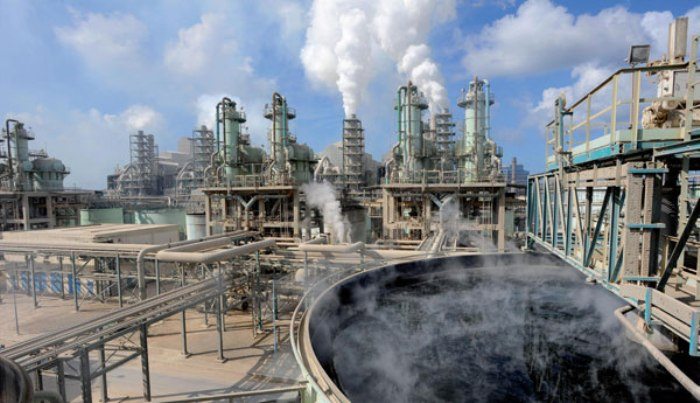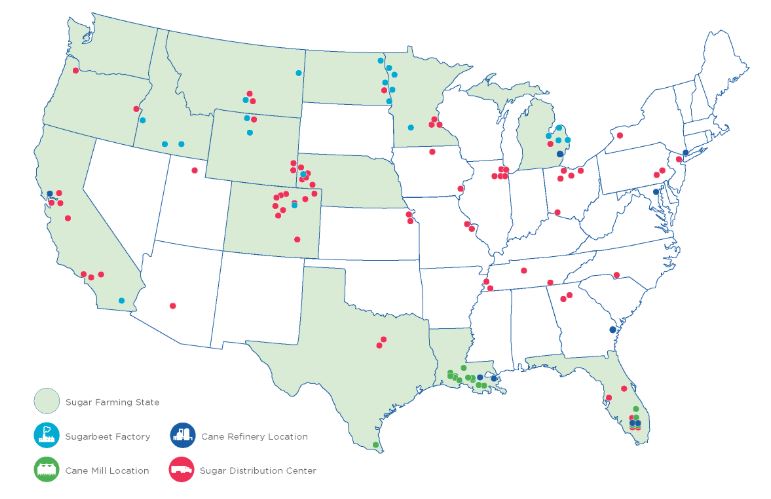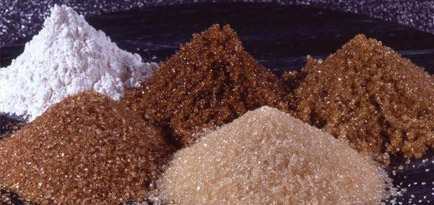Industrial Sugar


11,000 family farmers grow sugar on 2 million acres.
Sugar generates 142,000 jobs and adds $20 billion to the economy.
| State | Number of Jobs | Economic Impact |
|---|---|---|
| Minnesota | 28,021 | $3.36 Billion |
| Louisiana | 16,353 | $3.52 Billion |
| Idaho | 15,039 | $2.08 Billion |
| North Dakota | 14,324 | $1.78 Billion |
| Michigan | 12,641 | $1.28 Billion |
| Florida | 12,311 | $3.27 Billion |
| Nebraska | 11,477 | $397 Million |
| California | 6,437 | $942 Million |
| Colorado | 5,562 | $333 Million |
| Montana | 4,332 | $434 Million |
| Wyoming | 3,568 | $404 Million |
| Texas | 3,409 | $196 Million |
| Maryland | 2,660 | $456 Million |
| Georgia | 1,976 | $474 Million |
| Hawaii | 1,426 | $210 Million |
| Oregon | 1,222 | $33 Million |
| New York | 1,105 | $292 Million |
Sugar crops offer production alternatives to food, such as livestock feed, fiber and energy, particularly biofuels (sugar-based ethanol) and/or co-generation of electricity (cane bagasse). Sugarcane is generally regarded as one of the most significant and efficient sources of biomass for biofuel production. Stronger linkages between world sugar and oil prices have emerged, driven in part by the relationships between sugar as the primary ethanol feedstock in Brazil, the world’s dominant producer of sugarcane-based ethanol in the world. A wide range of environmental and social issues are connected with sugar production and processing, and sugar crop growers, processors, plus energy and food companies, are seeking ways to address concerns related to sugar production, biofuels and sustainability.
Production
Currently more than 130 countries produce either sugarcane or sugar beet, and ten of these produce sugar from both cane and beet crops. Sugarcane, on average, accounts for about 80% of global sugar production. Production has become increasingly concentrated. In 1980 the top ten producing countries accounted for 56% of global, whereas in 2016 the top ten accounted for 76%.


World sugar trade averages about 60 million tons per year. Raw sugar accounts for more around 60% of internationally trade volumes. Although many countries produce sugar, ten countries dominate global raw sugar exports, with Brazil, Thailand, Australia, Guatemala, Mexico, India, Cuba, Swaziland, Argentina and El Salvador accounting for 92% of the trade in 2016. Brazil, as the largest producing and exporting country in the world, dominates world trade, accounting for 45% of global export trade in 2016, up from 21% in 2000.
China, Indonesia, the United states and the EU-28 were world’s largest importing nations in 2016. These are also major destinations for raw sugar. Key destinations for white sugar include the China, Sudan, United States, and Sri Lanka.

